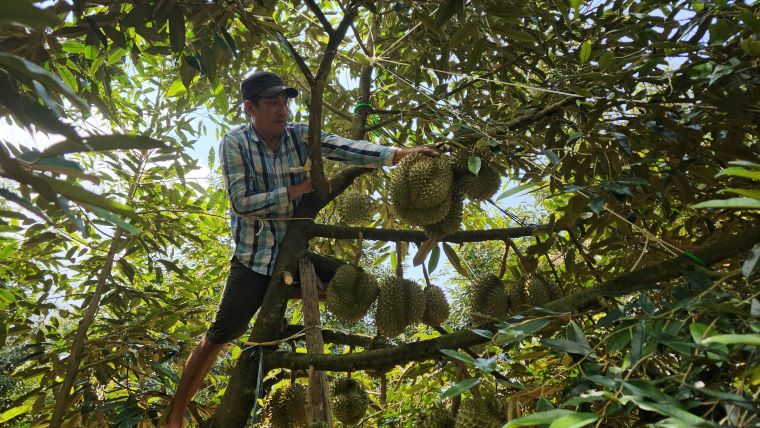Importing partners tighten regulations
The story of heavy metal residues and banned substances in durian is a very serious problem for people and businesses. Specifically Cadimi and O-lyngold.
According to experts, O yellow (yellow alcohol) is a compound with the risk of causing cancer, so it is classified as a banned substance for use in livestock, not used for the production and processing of agricultural products and food additives.
Cadimi is a heavy metal that can accumulate in food and harm human health if it exceeds the safe level.

Since the beginning of the year, China - the market that consumes more than 90% of Vietnam's durian output - has required 100% of shipments to have Cadimi and O gold certificates to be cleared.
If leftover is detected, the packaging facility codes and growing areas will be suspended.
Concerns about the source of banned substances
China's request to control the remnants of heavy metals and banned substances has made many people and businesses worried. Mr. Nguyen Huu Chien, Director of Tan Lap Dong Agricultural Service Cooperative (Dak Lak district) said that each year, more than 950 tons of fresh durian are supplied to the market.
Most of the cooperative's durian output is purchased by enterprises for export to the Chinese market.
When the Chinese side requested to test Cadimi and the O-lyrics, Mr. Chien was very worried and wanted to know where these substances came from for treatment.
Not only growers but also exporting enterprises are facing difficulties in not knowing the origin of Cadimi and O Gold.
Mr. Vu Quang Phuc, representative of Trung Bao Tin Group Joint Stock Company, said that he did not know where this substance came from. It could be from containers, leftovers from the previous year or cross-contamination during the inspection of goods at border gates.
Mr. Phuc added that since the beginning of the year, businesses have encountered many difficulties, the amount of goods cannot be transported is not much, and procedures are complicated and prolonged. Some trucks waited for a whole month, but when they were cleared, the goods were broken.
Currently, businesses are having difficulty finding safe raw material areas for purchasing and exporting. Therefore, Mr. Phuc hopes that specialized agencies will participate in the research, find the causes and solutions.
According to Mr. Vu Duc Con - Chairman of the Durian Association of Dak Lak province, the number of growing area codes and durian packaging facilities has been continuously revoked by China. To date, about 55 growing area codes and 61 packaging facility codes have been revoked.
This situation greatly affects the export of durian to the Chinese market. Especially for Dak Lak, which is about to enter the 2025 harvest. This is the locality with the largest durian area and output in the country.
Dak Lak currently has about 37,400 hectares of durian, with an expected output of more than 387,000 tons this year.











